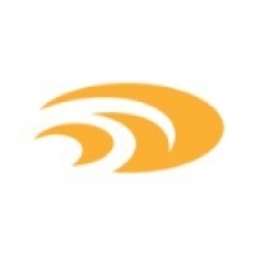Technology Category
- Functional Applications - Enterprise Asset Management Systems (EAM)
- Platform as a Service (PaaS) - Application Development Platforms
Applicable Industries
- Consumer Goods
- Retail
Applicable Functions
- Sales & Marketing
Use Cases
- Asset Health Management (AHM)
- Asset Lifecycle Management
Services
- System Integration
About The Customer
Splashlight is a visual content and technology provider that has been creating high-quality content and transforming production systems for nearly 15 years. The company develops world-class technology with an insatiable mission to deliver creative intelligence at every turn. In a world where data and fashion seem to be at odds, Splashlight intuitively understands the importance of leveraging technology to help retail brands exceed their goals. The company works with brands that manage enormous amounts of merchandise, providing them with the tools to track their assets in incredible detail and create their own personalized system of accountability.
The Challenge
Splashlight, a visual content and technology provider, was faced with the challenge of working transparently with clients to plan and improve their creative production processes. The company needed a 'central nervous system' that would align all parties involved, including merchandise teams, photographers, post-production teams, and the client, on the production schedule. This was necessary to support faster delivery of assets and allow for real-time adjustments to marketing strategies. Furthermore, Splashlight wanted a service that would enable brands managing enormous amounts of merchandise to not only track their assets in incredible detail but also create their own personalized system of accountability.
The Solution
Splashlight adopted DALIM ES, an integrated web-based platform for efficient asset production and management. This unique customizable solution provides clients with efficient workflows and crystal-clear visibility into the production process. As a result, clients are able to plan and organize their creative assets more efficiently and generate more relevant and accurate photography output. According to Peter Gunther, Senior Director of Strategic Technology at Splashlight, the technology offered by DALIM ES can help brands better track their merchandise, deliver results on set more efficiently, and support their bottom line by planning, creating, and routing assets that go to the right place, at the right time to drive conversion. Benoit Lagarde, Splashlight’s Co-Founder, further explains that clients can customize virtually any element of the process, allowing them to focus on what they do best: generating the best work and getting their product quickly to market.
Operational Impact

Case Study missing?
Start adding your own!
Register with your work email and create a new case study profile for your business.
Related Case Studies.
.png)
Case Study
Improving Vending Machine Profitability with the Internet of Things (IoT)
The vending industry is undergoing a sea change, taking advantage of new technologies to go beyond just delivering snacks to creating a new retail location. Intelligent vending machines can be found in many public locations as well as company facilities, selling different types of goods and services, including even computer accessories, gold bars, tickets, and office supplies. With increasing sophistication, they may also provide time- and location-based data pertaining to sales, inventory, and customer preferences. But at the end of the day, vending machine operators know greater profitability is driven by higher sales and lower operating costs.

Case Study
Improving Production Line Efficiency with Ethernet Micro RTU Controller
Moxa was asked to provide a connectivity solution for one of the world's leading cosmetics companies. This multinational corporation, with retail presence in 130 countries, 23 global braches, and over 66,000 employees, sought to improve the efficiency of their production process by migrating from manual monitoring to an automatic productivity monitoring system. The production line was being monitored by ABB Real-TPI, a factory information system that offers data collection and analysis to improve plant efficiency. Due to software limitations, the customer needed an OPC server and a corresponding I/O solution to collect data from additional sensor devices for the Real-TPI system. The goal is to enable the factory information system to more thoroughly collect data from every corner of the production line. This will improve its ability to measure Overall Equipment Effectiveness (OEE) and translate into increased production efficiencies. System Requirements • Instant status updates while still consuming minimal bandwidth to relieve strain on limited factory networks • Interoperable with ABB Real-TPI • Small form factor appropriate for deployment where space is scarce • Remote software management and configuration to simplify operations

Case Study
How Sirqul’s IoT Platform is Crafting Carrefour’s New In-Store Experiences
Carrefour Taiwan’s goal is to be completely digital by end of 2018. Out-dated manual methods for analysis and assumptions limited Carrefour’s ability to change the customer experience and were void of real-time decision-making capabilities. Rather than relying solely on sales data, assumptions, and disparate systems, Carrefour Taiwan’s CEO led an initiative to find a connected IoT solution that could give the team the ability to make real-time changes and more informed decisions. Prior to implementing, Carrefour struggled to address their conversion rates and did not have the proper insights into the customer decision-making process nor how to make an immediate impact without losing customer confidence.

Case Study
Digital Retail Security Solutions
Sennco wanted to help its retail customers increase sales and profits by developing an innovative alarm system as opposed to conventional connected alarms that are permanently tethered to display products. These traditional security systems were cumbersome and intrusive to the customer shopping experience. Additionally, they provided no useful data or analytics.





